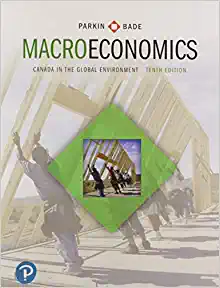Question
Need help! 1.What happens to equilibrium price and quantity in the following scenarios?Circle the correct answer for each scenario below. a.Supply shifts right PRICE ->

Need help!
1.What happens to equilibrium price and quantity in the following scenarios?Circle the correct answer for each scenario below.
a.Supply shifts right
PRICE ->GOES UPGOES DOWNUNDETERMINED
QUANTITY ->GOES UPGOES DOWNUNDETERMINED
b.Demand decreases
PRICE ->GOES UPGOES DOWNUNDETERMINED
QUANTITY ->GOES UPGOES DOWNUNDETERMINED
c.Demand and supply both increase
PRICE ->GOES UPGOES DOWNUNDETERMINED
QUANTITY ->GOES UPGOES DOWNUNDETERMINED
d.Demand shifts left and supply shifts right
PRICE ->GOES UPGOES DOWNUNDETERMINED
QUANTITY ->GOES UPGOES DOWNUNDETERMINED
e.A very large shift to the right in demand is accompanied by a very small shift to the left in supply (assume curves have equal magnitude of slope)
PRICE ->GOES UPGOES DOWNUNDETERMINED
QUANTITY ->GOES UPGOES DOWNUNDETERMINED
2.Show the derivation of a supply curve from the underlying fundamentals of producers solving their problem.In other words, show a societal PPF, given price line, and amount of good 1 produced.Then change the price of good 1 (either decrease or increase it) and show the new amount of good 1 produced.Change the price one more time (in the same direction) and show the new amount of good 1 produced.Plot your three (Q, P) points on a separate graph to reveal your supply curve.
3.There have been two notions of equilibrium to this point in the course.The first involves a societal PPF, budget/revenue line, and societal IC that shows the exact same amount of good 1 being produced as is consumed (and the same for good 2).The second involves the intersection of supply and demand curves for a single good.Show each of these graphically.
4.Show the derivation of a demand curve from the underlying fundamentals of consumers solving their problem.In other words, show a budget constraint and indifference curve that shows a consumer solving his problem.Then change the price of good 1 (either decrease or increase it) and show the new amount of good 1 consumed (assume the indifference curves are basically parallel and behave "nicely").Change the price one more time (in the same direction) and show the new amount of good 1 consumed.Plot your three (Q1, P1) points on a separate graph to reveal your demand curve.
Please circle the correct answer for the multiple choice questions that follow.
1.Suppose a consumer has an income of $400 per month and that she spends her entire income each month on beer and bratwurst.The price of beer is $5 and the price of a bratwurst is $4.Which of the following combinations of beers and bratwursts is unaffordable?
a.60 beers and 20 bratwursts
b.35 beers and 35 bratwursts
c.70 beers and 0 bratwursts
d.40 beers and 50 bratwursts
e.80 beers and 10 bratwursts
2.A decrease in income will cause a consumer's budget constraint to
a.Shift outward, parallel to its initial position
b.Shift inward, and become more steeply sloped
c.Shift inward, parallel to its initial position
d.Pivot around the horizontal axis
e.Pivot around the vertical axis
3.The following diagram shows a budget constraint for a particular consumer.If the price of X is $10, what is the price of Y?
a.$5
b.$15
c.$25
d.$35
e.$45
f.$55
4.The following diagram shows two budget constraints: BC 1 and BC 2.Which of the following could explain the change in the budget constraint from BC 1 to BC 2?
a.Simultaneous decrease in both the price of X and the price of Y
b.Increase in income
c.Decrease in price of Y
d.Decrease in income
e.Doubling of both the price of X and the price of Y
f.Both a. and b. are correct
g.Both a. and d. are correct
h.Both d. and e. are correct
5.When the indifference curve is tangent to the budget constraint
a.Producers gain increased surplus
b.A consumer cannot be made better off without increasing his income
c.The consumer is likely at a suboptimal level of consumption
d.Income is at its optimum for a consumer
e.Indifference curves are likely to intersect
f.At least two indifference curves must intersect the budget constraint
6.Which of the following events would shift the demand curve for gasoline to the left?
a.The income of gasoline buyers rises and gasoline is a normal good.
b.The income of gasoline buyers falls and gasoline is an inferior good.
c.Public service announcements run on television encouraging people to walk or ride bicycles instead of driving cars.
d.The price of gasoline rises.
e.The price of gasoline falls.
7.Which of the following would cause the demand curve for an inferior good to shift to the right?
a.Increase in income
b.Increase in price of a substitute good
c.Increase in price of a complement good
d.Decrease in price of a substitute good
8.Suppose that a decrease in the price of good X results in fewer units of good Y being sold.This implies that X and Y are
a.Complementary goods
b.Normal goods
c.Inferior goods
d.Substitute goods
e.Giffen goods
9.When supply and demand both increase, equilibrium
a.Price will increase
b.Price will decrease
c.Quantity may increase, decrease, or stay the same
d.Price may increase, decrease, or stay the same
e.Price and quantity will increase
 3. The following diagram shows a budget constraint for a particular consumer. If the price of X is $10, what is the price of Y? 40+ 20 10 10 do 70 X a. $5 b. $15 C. $25 d. $35 e. $45 f. $55
3. The following diagram shows a budget constraint for a particular consumer. If the price of X is $10, what is the price of Y? 40+ 20 10 10 do 70 X a. $5 b. $15 C. $25 d. $35 e. $45 f. $55 Step by Step Solution
There are 3 Steps involved in it
Step: 1

Get Instant Access to Expert-Tailored Solutions
See step-by-step solutions with expert insights and AI powered tools for academic success
Step: 2

Step: 3

Ace Your Homework with AI
Get the answers you need in no time with our AI-driven, step-by-step assistance
Get Started


